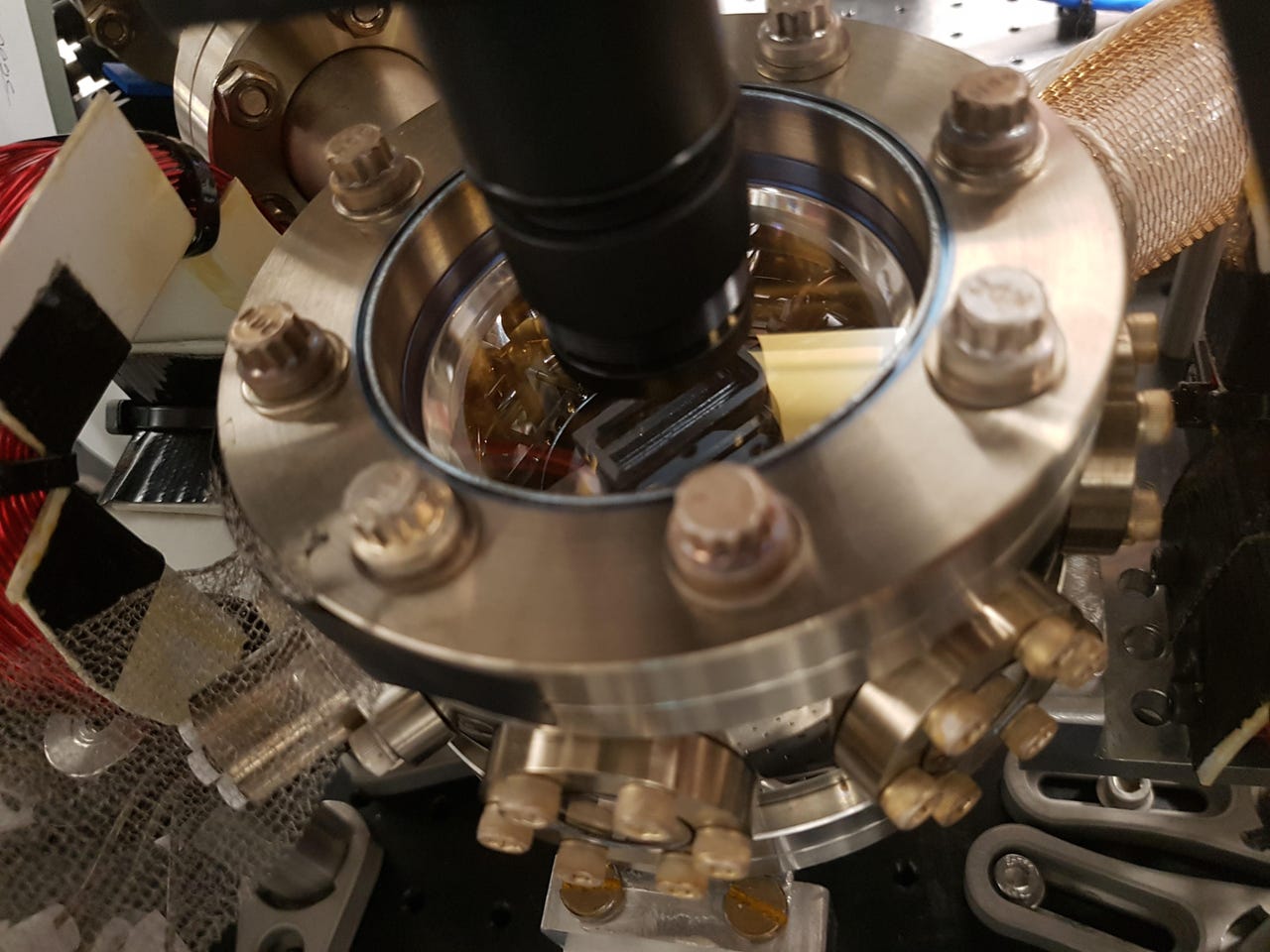University of Sydney develops quantum trick to block background sensor 'chatter'


An ion trap in professor Michael J Biercuk's laboratory in the Sydney Nanoscience Hub.
A team from the University of Sydney (USyd), alongside Dartmouth College and Johns Hopkins Applied Physics Laboratory in the US, has announced solving a common problem in quantum sensing devices, effectively developing a method to block background "chatter".
According to the university, the quantum control techniques enable new ultra-sensitive sensors that can identify tiny signals while rejecting background noise down to theoretical limits.
Led by professor Michael J Biercuk, who is also the chief investigator at the ARC Centre of Excellence for Engineered Quantum Systems, the team has managed to "trick" devices that are too sensitive to block out background noise.
"By applying the right quantum controls to a qubit [quantum bit]-based sensor, we can adjust its response in a way that guarantees the best possible exclusion of the background clutter -- that is, the other voices in the room," professor Biercuk explained.
USyd said that while devices themselves have improved, the measurement protocols used to capture and interpret the signals have lagged behind and quantum sensors therefore often return "fuzzy" results, complicating the interpretation of the data through a phenomenon known as "spectral leakage".
According to USyd, the team's experiments, using trapped atomic ions, have reduced spectral leakage by "many orders of magnitude" over conventional methods.
Biercuk said in certain circumstances, the methods developed are up to 100 million times better at excluding this background.
He also said quantum sensors take advantage of the very thing that makes building quantum computers difficult, as while qubits are the building blocks of quantum computers, they are also prone to losing their quantum properties due to interference from the environment.
"Our approach is relevant to nearly any quantum sensing application and can also be applied to quantum computing as it provides a way to help identify sources of hardware error. This is a major advance in how we operate quantum sensors," Biercuk added.
The research, published on Tuesday in Nature Communications, highlights the new protocols could have applications in medicine, such as imaging inside living cells using nanodiamonds. They could also be used in defence and security systems that use quantum-enhanced magnetometers, devices that measure changes in magnetic fields for target identification and tracking.
Professor Biercuk has recently launched a venture-capital-backed spin-off -- Q-Ctrl -- from the work being done at the university, aiming to be the provider of quantum control solutions for all new quantum technologies.
Q-Ctrl received funding October from the CSIRO's AU$200 million Main Sequence Ventures co-investment fund.
Last month, another team at USyd working with Microsoft, alongside Stanford University in the US, announced the development of a miniaturised component touted as essential for the scale-up of quantum computing.
MORE ON QUANTUM COMPUTING
- Microsoft and USyd claim invention of key quantum computing component
- Australia's ambitious plan to win the quantum race
- Sydney Uni predicts the unpredictable in quantum computing advancement
- University of Sydney receives quantum computing grant from US intelligence
- What will you actually use quantum computing for?
- IBM's big quantum push: Samsung, Daimler sign up for 20-qubit test drive
- UNSW unlocks key to quantum coding in silicon
- UNSW unveils complete design of a silicon quantum computer chip
- Why more companies will be betting on Bitcoin in 2018 (TechRepublic)
- How quantum computing could create unbreakable encryption and save the future of cybersecurity (TechRepublic)